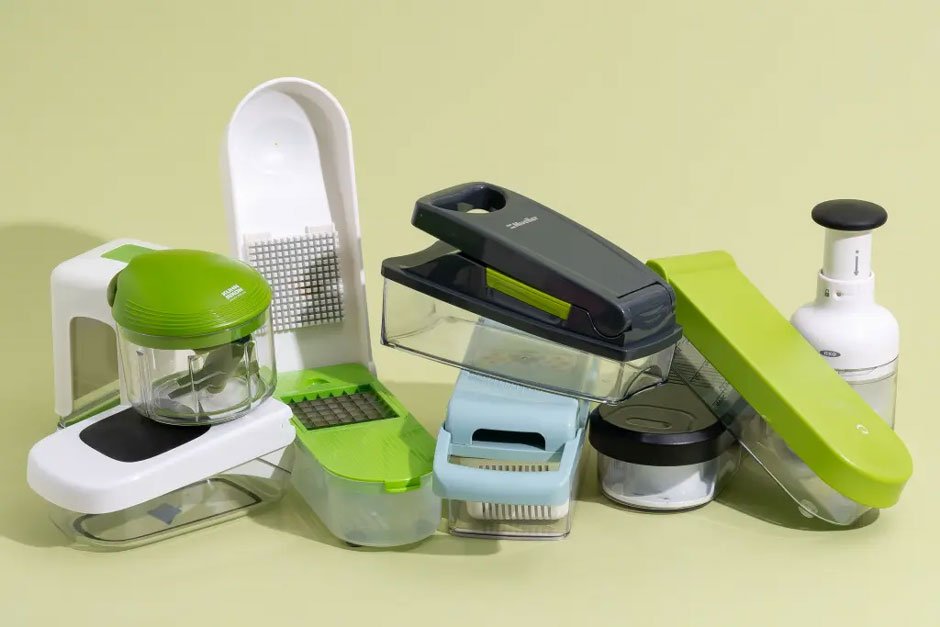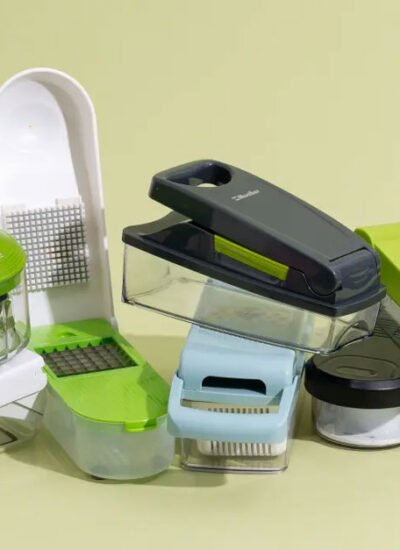 An electric vegetable slicer can save time in the kitchen and make meal prep more efficient. It takes the effort out of slicing by delivering consistent results with less work. Knowing what features to look for helps anyone choose a slicer that matches their cooking habits and kitchen space.
An electric vegetable slicer can save time in the kitchen and make meal prep more efficient. It takes the effort out of slicing by delivering consistent results with less work. Knowing what features to look for helps anyone choose a slicer that matches their cooking habits and kitchen space.
The right model can handle different types of produce, support safe use, and fit neatly into daily routines. Each feature, from blade quality to cleaning ease, plays a role in how well the slicer performs over time. By understanding these factors, anyone can invest in a tool that makes food preparation faster and more practical.
Blade Variety and Sharpness
An electric vegetable slicer works best when it offers multiple blade options. Straight blades handle smooth slices, while julienne or dicing blades create uniform cuts for salads, stir-fries, and garnishes. A wide range of blades gives more flexibility in the kitchen.
Sharpness matters as much as variety. Dull blades force the motor to work harder and produce uneven results. Sharp blades cut cleanly, reduce waste, and keep food looking consistent.
Safety features also connect to blade sharpness. A sharp blade paired with a secure guard or pusher allows faster slicing without extra risk. This balance makes the slicer both practical and safe for daily use.
Cleaning should not be overlooked. An easy-to-clean electric vegetable slicer keeps blades in good condition and prevents food buildup. Removable parts and dishwasher-safe materials save time and help maintain sharpness for longer.
Motor Power and Speed Settings
Motor power plays a major role in how well an electric vegetable slicer handles different foods. A stronger motor can cut through dense vegetables like carrots or sweet potatoes with less effort. A weaker motor may struggle with tougher textures and slow down meal prep.
Speed settings add flexibility to the slicer. Low speeds work better for softer vegetables or more delicate cuts. High-speed processing firms vegetables faster and saves time during large meal prep. Pulse options give more control for chopping or dicing.
The right balance between motor strength and speed options helps match the slicer to the user’s needs. A home cook who prepares simple salads may not need as much power as someone who cooks in larger batches. Therefore, checking both wattage and speed settings before buying makes the choice more practical.
Safety Features and Locking Mechanisms
Safety features play an important role in the design of an electric vegetable slicer. Sharp blades and strong motors can cause accidents if the machine lacks proper safeguards. Therefore, buyers should pay close attention to built-in protections before making a choice.
A locking mechanism prevents the slicer from turning on by accident. Many models require a lever or button to be engaged before the blades start moving. This feature adds an extra step that reduces the chance of injury during setup or storage.
Stability also matters for safe use. A sturdy base or non-slip feet help keep the slicer steady on the counter. Without this support, the machine could shift during use and increase the risk of accidents.
Some slicers include a food pusher that keeps hands away from the blades. This simple tool allows users to press vegetables through the chute without direct contact. As a result, it helps maintain both speed and safety during food preparation.
Ease of Cleaning and Dishwasher-Safe Parts
Buyers often place ease of cleaning at the top of their list when choosing an electric vegetable slicer. A slicer with parts that detach quickly makes the process faster and less frustrating. Smooth surfaces without too many small gaps also help prevent food from sticking.
Dishwasher-safe parts add another layer of convenience. Many slicers now feature blades, trays, and food pushers that can go on the top rack. This saves time and reduces the need for scrubbing by hand.
However, not every part of a slicer should go in the dishwasher. Motors and bases must always be wiped with a damp cloth instead of being submerged. Checking the manual before washing prevents damage and keeps the machine in good condition.
In addition, a slicer that comes with a cleaning brush or tool can make maintenance easier. These small extras help remove food from blades safely and reduce wear over time.
Compact Design and Storage Options
A compact slicer saves counter space and makes kitchen tasks easier. Many households prefer a unit that fits neatly in a cabinet or on a small shelf without taking up too much room. Size matters for those who cook often but have limited storage.
Manufacturers often design slicers with detachable parts that allow simple disassembly. This feature helps the machine fit into tighter spaces and makes it easier to clean. Smaller accessories can be stored inside the main body, which reduces clutter.
Cord storage also plays a role in convenience. A built-in compartment or wrap-around design keeps the cord secure and prevents tangling. This detail may seem minor, but it makes a difference in daily use.
Weight should also be considered. A lighter machine can be moved from the cabinet to the counter without much effort. However, it should still feel stable enough during operation to avoid sliding or tipping.
Compact design combined with smart storage features creates a more practical tool for everyday cooking.
Conclusion
An electric vegetable slicer can save time and create consistent results, but the right choice depends on blade options, speed settings, and ease of cleaning. Each feature plays a direct role in how practical the slicer feels in daily use.
Shoppers should also weigh safety features, size, and storage needs. A slicer that balances performance with convenience often proves the most useful in the kitchen.
By focusing on durability, simple controls, and versatility, buyers can select a model that fits their cooking habits and supports efficient meal preparation.





Leave a Reply